(Image Caption: Two Aplysia Sensory Neurons With Synaptic Contacts On The Same Motor Neuron In Culture

(Image caption: Two Aplysia sensory neurons with synaptic contacts on the same motor neuron in culture after isolation from the nervous system of Aplysia. The motor neuron has been injected with a fluorescent molecule that blocks the activity of a specific Protein Kinase M molecule. Credit: Schacher Lab/Columbia University Medical Center)
Select Memories Can Be Erased, Leaving Others Intact
Different types of memories stored in the same neuron of the marine snail Aplysia can be selectively erased, according to a new study by researchers at Columbia University Medical Center (CUMC) and McGill University and published in Current Biology.
The findings suggest that it may be possible to develop drugs to delete memories that trigger anxiety and post-traumatic stress disorder (PTSD) without affecting other important memories of past events.
During emotional or traumatic events, multiple memories can become encoded, including memories of any incidental information that is present when the event occurs. In the case of a traumatic experience, the incidental, or neutral, information can trigger anxiety attacks long after the event has occurred, say the researchers.
“The example I like to give is, if you are walking in a high-crime area and you take a shortcut through a dark alley and get mugged, and then you happen to see a mailbox nearby, you might get really nervous when you want to mail something later on,” says Samuel Schacher, PhD, a professor of neuroscience in the Department of Psychiatry at CUMC and co-author of the paper. In the example, fear of dark alleys is an associative memory that provides important information—e.g., fear of dark alleys—based on a previous experience. Fear of mailboxes, however, is an incidental, non-associative memory that is not directly related to the traumatic event.
“One focus of our current research is to develop strategies to eliminate problematic non-associative memories that may become stamped on the brain during a traumatic experience without harming associative memories, which can help people make informed decisions in the future—like not taking shortcuts through dark alleys in high-crime areas,” Dr. Schacher adds.
Brains create long-term memories, in part, by increasing the strength of connections between neurons and maintaining those connections over time. Previous research suggested that increases in synaptic strength in creating associative and non-associative memories share common properties. This suggests that selectively eliminating non-associative synaptic memories would be impossible, because for any one neuron, a single mechanism would be responsible for maintaining all forms of synaptic memories.
The new study tested that hypothesis by stimulating two sensory neurons connected to a single motor neuron of the marine snail Aplysia; one sensory neuron was stimulated to induce an associative memory and the other to induce a non-associative memory.
By measuring the strength of each connection, the researchers found that the increase in the strength of each connection produced by the different stimuli was maintained by a different form of a Protein Kinase M (PKM) molecule (PKM Apl III for associative synaptic memory and PKM Apl I for non-associative). They found that each memory could be erased – without affecting the other — by blocking one of the PKM molecules.
In addition, they found that specific synaptic memories may also be erased by blocking the function of distinct variants of other molecules that either help produce PKMs or protect them from breaking down.
The researchers say that their results could be useful in understanding human memory because vertebrates have similar versions of the Aplysia PKM proteins that participate in the formation of long-term memories. In addition, the PKM-protecting protein KIBRA is expressed in humans, and mutations of this gene produce intellectual disability.
“Memory erasure has the potential to alleviate PTSD and anxiety disorders by removing the non-associative memory that causes the maladaptive physiological response,” says Jiangyuan Hu, PhD, an associate research scientist in the Department of Psychiatry at CUMC and co-author of the paper. “By isolating the exact molecules that maintain non-associative memory, we may be able to develop drugs that can treat anxiety without affecting the patient’s normal memory of past events.”
“Our study is a ‘proof of principle’ that presents an opportunity for developing strategies and perhaps therapies to address anxiety,” said Dr. Schacher. “For example, because memories are still likely to change immediately after recollection, a therapist may help to ‘rewrite’ a non-associative memory by administering a drug that inhibits the maintenance of non-associative memory.”
Future studies in preclinical models are needed to better understand how PKMs are produced and localized at the synapse before researchers can determine which drugs may weaken non-associative memories.
More Posts from Ourvioletdeath and Others
Awww
Martin, the Carolina Wolf Spider, chewing away on his toes (tarsi) while my friend Josh lectures some elementary students on coral reefs.





napping bear. or, melodramatic thespian bear. photos by olav thokle in alaska’s lake clark national park
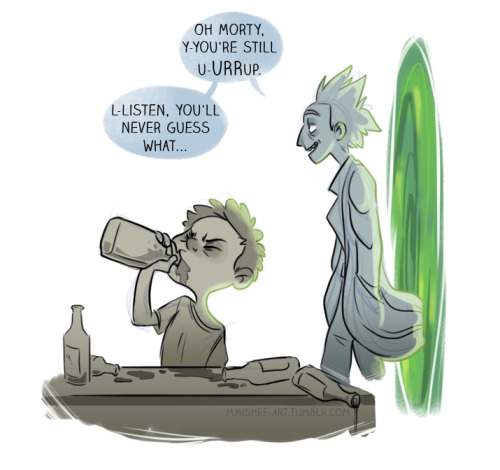
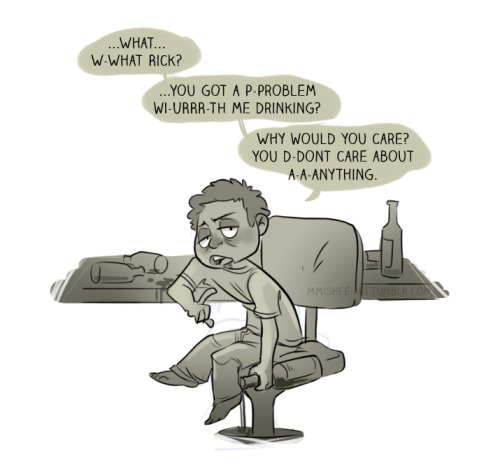
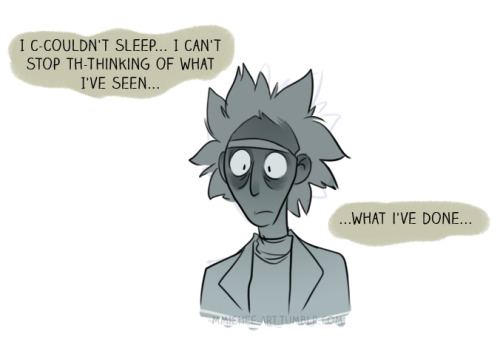
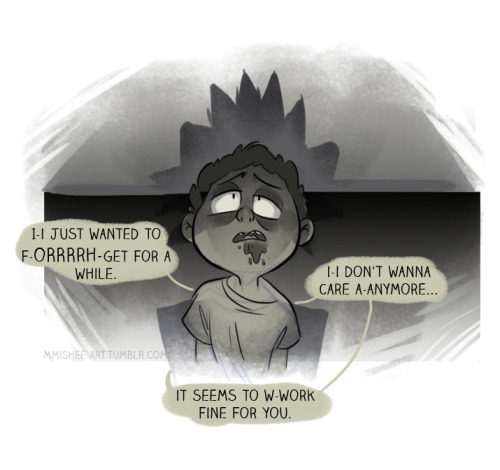
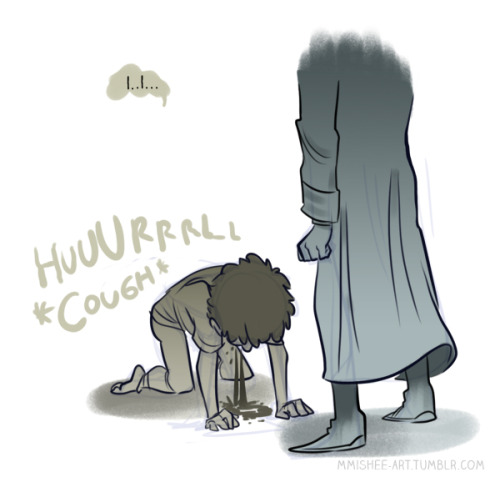

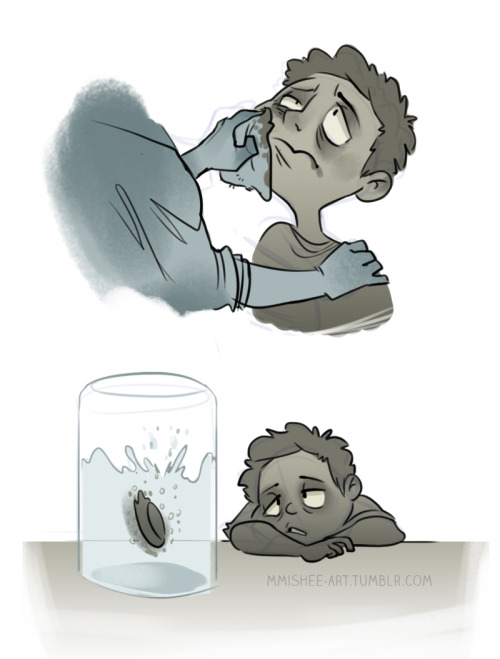

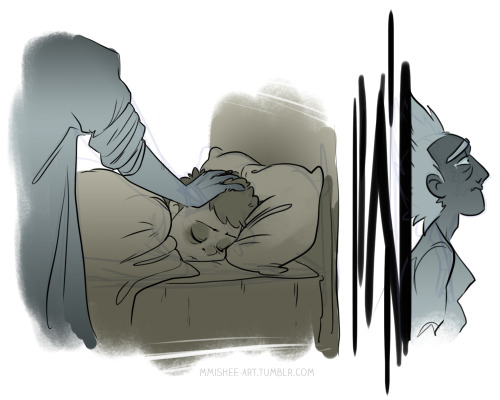

I continued with the ‘Morty is going to turn into Rick’ theme.
Cause I love hurting myself and I’m taking you all with me.
・✿ヾ╲(。◕‿◕。)╱✿・゚
What’s the worst thing I’ve stolen? Probably little pieces of other people’s lives. Where I’ve either wasted their time or hurt them in some way. That’s the worst thing you can steal, the time of other people. You just can’t get that back.
Chester Bennington (via wordsnquotes)

Researchers at King’s College London found that the drug Tideglusib stimulates the stem cells contained in the pulp of teeth so that they generate new dentine – the mineralised material under the enamel.
Teeth already have the capability of regenerating dentine if the pulp inside the tooth becomes exposed through a trauma or infection, but can only naturally make a very thin layer, and not enough to fill the deep cavities caused by tooth decay.
But Tideglusib switches off an enzyme called GSK-3 which prevents dentine from carrying on forming.
Scientists showed it is possible to soak a small biodegradable sponge with the drug and insert it into a cavity, where it triggers the growth of dentine and repairs the damage within six weeks.
The tiny sponges are made out of collagen so they melt away over time, leaving only the repaired tooth.

All the vanco

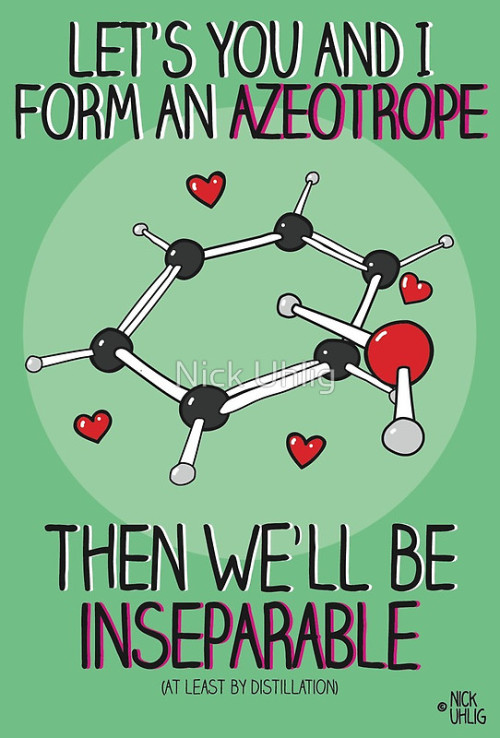
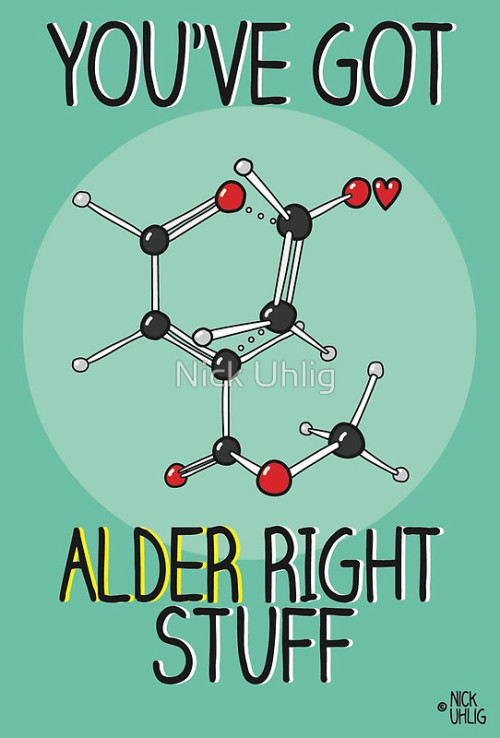
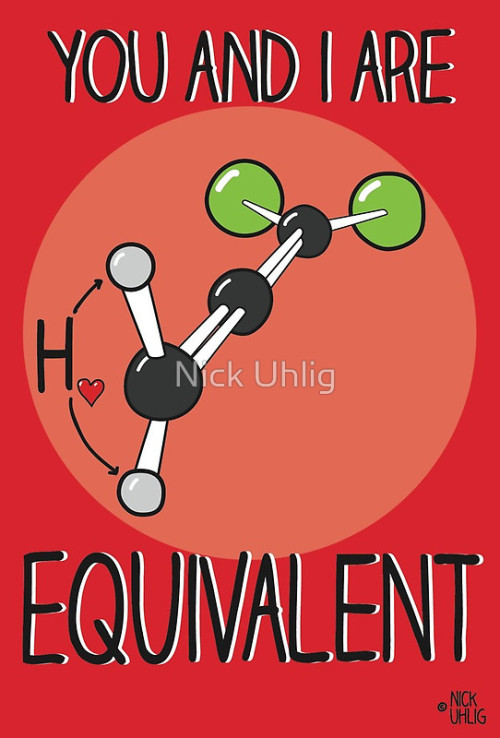
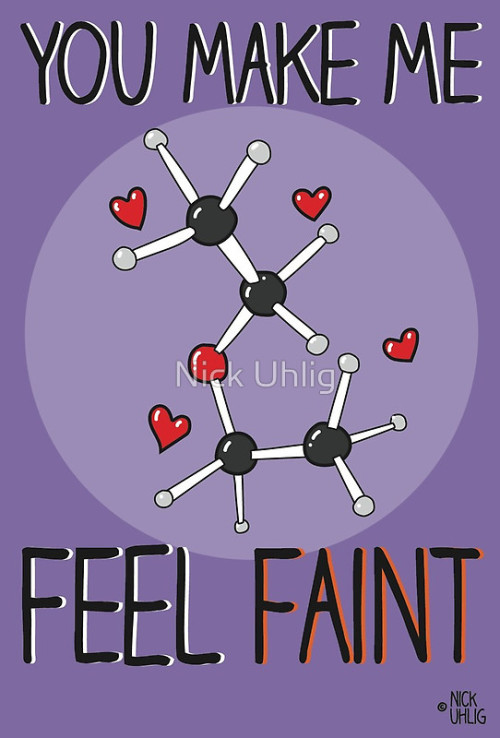

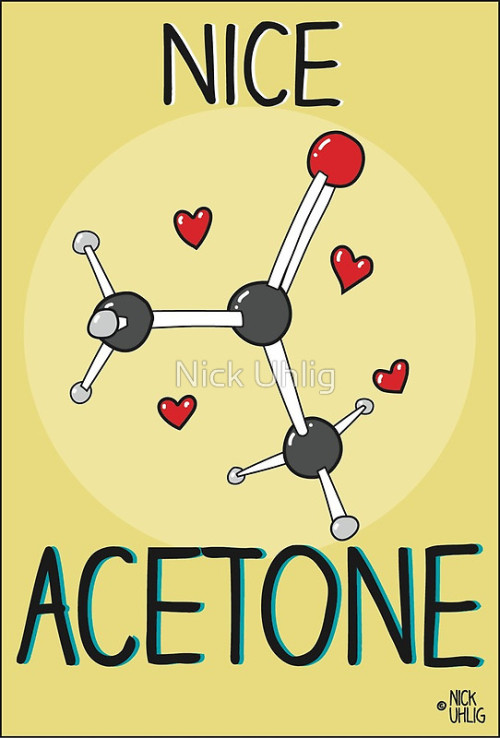
Chemistry Valentine’s Cards by Nick Uhlig.

Peering into neural networks
Neural networks, which learn to perform computational tasks by analyzing large sets of training data, are responsible for today’s best-performing artificial intelligence systems, from speech recognition systems, to automatic translators, to self-driving cars.
But neural nets are black boxes. Once they’ve been trained, even their designers rarely have any idea what they’re doing — what data elements they’re processing and how.
Two years ago, a team of computer-vision researchers from MIT’s Computer Science and Artificial Intelligence Laboratory (CSAIL) described a method for peering into the black box of a neural net trained to identify visual scenes. The method provided some interesting insights, but it required data to be sent to human reviewers recruited through Amazon’s Mechanical Turk crowdsourcing service.
At this year’s Computer Vision and Pattern Recognition conference, CSAIL researchers presented a fully automated version of the same system. Where the previous paper reported the analysis of one type of neural network trained to perform one task, the new paper reports the analysis of four types of neural networks trained to perform more than 20 tasks, including recognizing scenes and objects, colorizing grey images, and solving puzzles. Some of the new networks are so large that analyzing any one of them would have been cost-prohibitive under the old method.
The researchers also conducted several sets of experiments on their networks that not only shed light on the nature of several computer-vision and computational-photography algorithms, but could also provide some evidence about the organization of the human brain.
Neural networks are so called because they loosely resemble the human nervous system, with large numbers of fairly simple but densely connected information-processing “nodes.” Like neurons, a neural net’s nodes receive information signals from their neighbors and then either “fire” — emitting their own signals — or don’t. And as with neurons, the strength of a node’s firing response can vary.
In both the new paper and the earlier one, the MIT researchers doctored neural networks trained to perform computer vision tasks so that they disclosed the strength with which individual nodes fired in response to different input images. Then they selected the 10 input images that provoked the strongest response from each node.
In the earlier paper, the researchers sent the images to workers recruited through Mechanical Turk, who were asked to identify what the images had in common. In the new paper, they use a computer system instead.
“We catalogued 1,100 visual concepts — things like the color green, or a swirly texture, or wood material, or a human face, or a bicycle wheel, or a snowy mountaintop,” says David Bau, an MIT graduate student in electrical engineering and computer science and one of the paper’s two first authors. “We drew on several data sets that other people had developed, and merged them into a broadly and densely labeled data set of visual concepts. It’s got many, many labels, and for each label we know which pixels in which image correspond to that label.”
The paper’s other authors are Bolei Zhou, co-first author and fellow graduate student; Antonio Torralba, MIT professor of electrical engineering and computer science; Aude Oliva, CSAIL principal research scientist; and Aditya Khosla, who earned his PhD as a member of Torralba’s group and is now the chief technology officer of the medical-computing company PathAI.
The researchers also knew which pixels of which images corresponded to a given network node’s strongest responses. Today’s neural nets are organized into layers. Data are fed into the lowest layer, which processes them and passes them to the next layer, and so on. With visual data, the input images are broken into small chunks, and each chunk is fed to a separate input node.
For every strong response from a high-level node in one of their networks, the researchers could trace back the firing patterns that led to it, and thus identify the specific image pixels it was responding to. Because their system could frequently identify labels that corresponded to the precise pixel clusters that provoked a strong response from a given node, it could characterize the node’s behavior with great specificity.
The researchers organized the visual concepts in their database into a hierarchy. Each level of the hierarchy incorporates concepts from the level below, beginning with colors and working upward through textures, materials, parts, objects, and scenes. Typically, lower layers of a neural network would fire in response to simpler visual properties — such as colors and textures — and higher layers would fire in response to more complex properties.
But the hierarchy also allowed the researchers to quantify the emphasis that networks trained to perform different tasks placed on different visual properties. For instance, a network trained to colorize black-and-white images devoted a large majority of its nodes to recognizing textures. Another network, when trained to track objects across several frames of video, devoted a higher percentage of its nodes to scene recognition than it did when trained to recognize scenes; in that case, many of its nodes were in fact dedicated to object detection.
One of the researchers’ experiments could conceivably shed light on a vexed question in neuroscience. Research involving human subjects with electrodes implanted in their brains to control severe neurological disorders has seemed to suggest that individual neurons in the brain fire in response to specific visual stimuli. This hypothesis, originally called the grandmother-neuron hypothesis, is more familiar to a recent generation of neuroscientists as the Jennifer-Aniston-neuron hypothesis, after the discovery that several neurological patients had neurons that appeared to respond only to depictions of particular Hollywood celebrities.
Many neuroscientists dispute this interpretation. They argue that shifting constellations of neurons, rather than individual neurons, anchor sensory discriminations in the brain. Thus, the so-called Jennifer Aniston neuron is merely one of many neurons that collectively fire in response to images of Jennifer Aniston. And it’s probably part of many other constellations that fire in response to stimuli that haven’t been tested yet.
Because their new analytic technique is fully automated, the MIT researchers were able to test whether something similar takes place in a neural network trained to recognize visual scenes. In addition to identifying individual network nodes that were tuned to particular visual concepts, they also considered randomly selected combinations of nodes. Combinations of nodes, however, picked out far fewer visual concepts than individual nodes did — roughly 80 percent fewer.
“To my eye, this is suggesting that neural networks are actually trying to approximate getting a grandmother neuron,” Bau says. “They’re not trying to just smear the idea of grandmother all over the place. They’re trying to assign it to a neuron. It’s this interesting hint of this structure that most people don’t believe is that simple.”
-
 pleasurehunter2000 liked this · 4 years ago
pleasurehunter2000 liked this · 4 years ago -
 devil-with-a-soul reblogged this · 5 years ago
devil-with-a-soul reblogged this · 5 years ago -
 mlndbodysplrlt liked this · 5 years ago
mlndbodysplrlt liked this · 5 years ago -
 beardedgiverfun reblogged this · 6 years ago
beardedgiverfun reblogged this · 6 years ago -
 loophole2000 liked this · 6 years ago
loophole2000 liked this · 6 years ago -
 iindigoboii liked this · 6 years ago
iindigoboii liked this · 6 years ago -
 ayorafoxsenpai4444 liked this · 6 years ago
ayorafoxsenpai4444 liked this · 6 years ago -
 nualie liked this · 6 years ago
nualie liked this · 6 years ago -
 a-golden-bear liked this · 6 years ago
a-golden-bear liked this · 6 years ago -
 droptheviolin reblogged this · 7 years ago
droptheviolin reblogged this · 7 years ago -
 llort reblogged this · 7 years ago
llort reblogged this · 7 years ago -
 xenofect-blog liked this · 7 years ago
xenofect-blog liked this · 7 years ago -
 shrksmile reblogged this · 7 years ago
shrksmile reblogged this · 7 years ago -
 apocryph0n reblogged this · 7 years ago
apocryph0n reblogged this · 7 years ago -
 marbeax liked this · 7 years ago
marbeax liked this · 7 years ago -
 science-loving-korean reblogged this · 7 years ago
science-loving-korean reblogged this · 7 years ago -
 science-loving-korean liked this · 7 years ago
science-loving-korean liked this · 7 years ago -
 stylishskinnyangelme liked this · 7 years ago
stylishskinnyangelme liked this · 7 years ago -
 petmydrunkindog liked this · 7 years ago
petmydrunkindog liked this · 7 years ago -
 scienceforreading-blog reblogged this · 7 years ago
scienceforreading-blog reblogged this · 7 years ago -
 myglamorousparadise liked this · 7 years ago
myglamorousparadise liked this · 7 years ago -
 herrbe liked this · 7 years ago
herrbe liked this · 7 years ago -
 afrika009 liked this · 7 years ago
afrika009 liked this · 7 years ago -
 necro-junkie-blog reblogged this · 7 years ago
necro-junkie-blog reblogged this · 7 years ago -
 nunuz-blog1 liked this · 7 years ago
nunuz-blog1 liked this · 7 years ago -
 douglammer liked this · 7 years ago
douglammer liked this · 7 years ago -
 angel5743 liked this · 7 years ago
angel5743 liked this · 7 years ago -
 quadrature-a-blom reblogged this · 7 years ago
quadrature-a-blom reblogged this · 7 years ago -
 whoelf reblogged this · 7 years ago
whoelf reblogged this · 7 years ago -
 roanokeriverdog liked this · 7 years ago
roanokeriverdog liked this · 7 years ago -
 chiragvadhel reblogged this · 7 years ago
chiragvadhel reblogged this · 7 years ago -
 chiragvadhel liked this · 7 years ago
chiragvadhel liked this · 7 years ago -
 jose-latran liked this · 7 years ago
jose-latran liked this · 7 years ago -
 kloudbby liked this · 7 years ago
kloudbby liked this · 7 years ago -
 humblenomore reblogged this · 7 years ago
humblenomore reblogged this · 7 years ago -
 cicanaci reblogged this · 7 years ago
cicanaci reblogged this · 7 years ago -
 dionbroad reblogged this · 7 years ago
dionbroad reblogged this · 7 years ago -
 jolkeen liked this · 7 years ago
jolkeen liked this · 7 years ago -
 crowfoot reblogged this · 7 years ago
crowfoot reblogged this · 7 years ago -
 brainterrain reblogged this · 7 years ago
brainterrain reblogged this · 7 years ago -
 susanzweig liked this · 7 years ago
susanzweig liked this · 7 years ago -
 mei-0-1-blog liked this · 7 years ago
mei-0-1-blog liked this · 7 years ago
